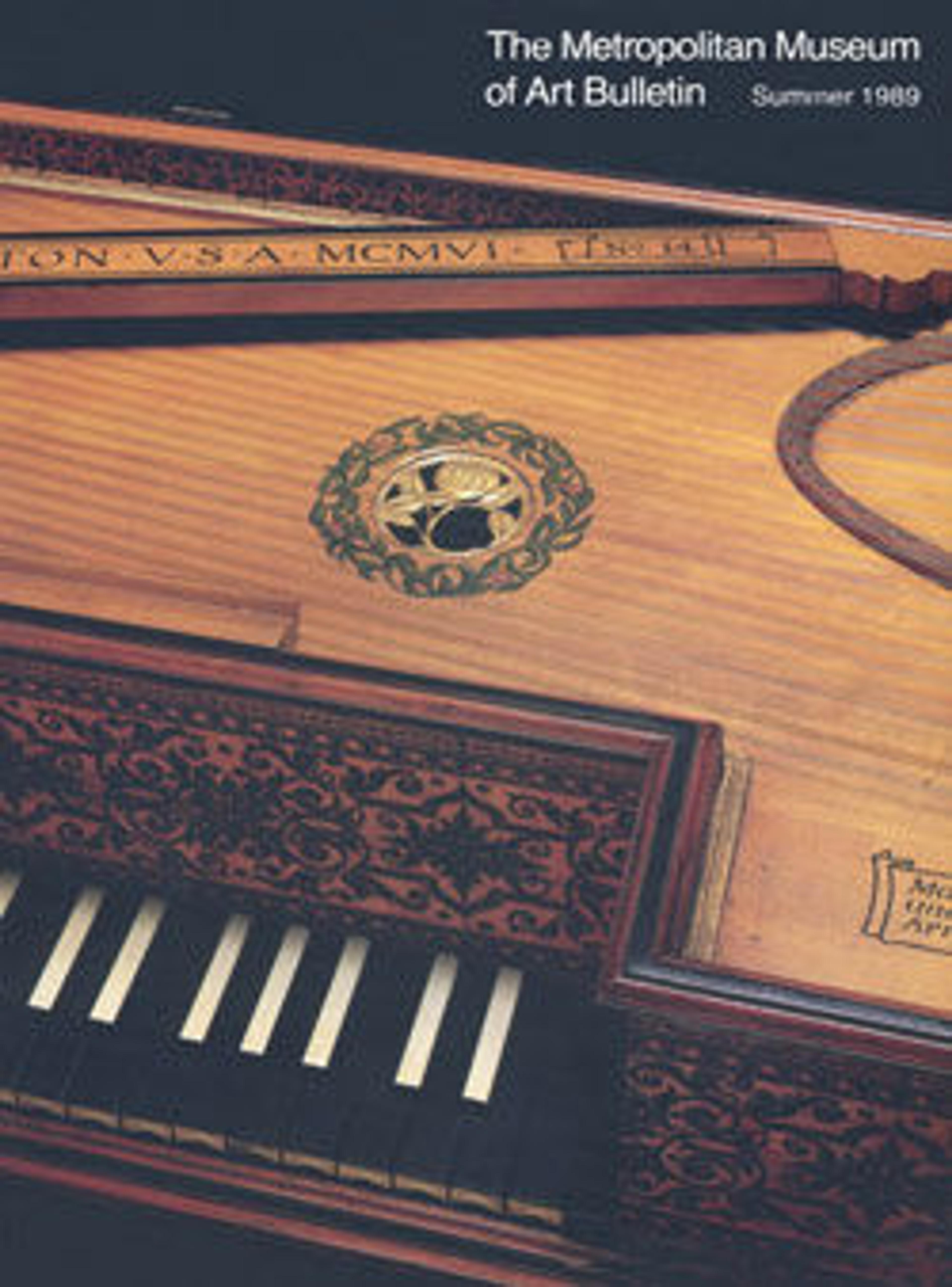Clavichord
The builder of this instrument, Johann Christoph Jesse, was organist for Saint Matin's in Halberstadt in the German state of Saxony-Anhalt. Clavichords were built as far back as the early fifteenth century, and perhaps earlier. This most personal, simplest, and quietest of European keyboard instruments was the perfect vehicle for music pedagogy, keyboard practice, and composition throughout its 400-year history. The action of the clavichord is relatively simple: the finger depresses a key which, working as a lever, causes its opposite end to rise so that a metal tongue (or tangent) hits a metal string, causing it to resonate. When the key is released, the string is damped. The clavichord is very quiet compared to the harpsichord or piano because of the inefficiency of its sound production, with the tangent hitting the string at the end of its resonating length, rather than in the middle. The tangent mechanism, however, allows a player to achieve a range, albeit narrow, of louder and softer tones as well as special effects like bebung, a form of vibrato, so that the clavichord was and is valued for its intimate expressiveness. Earlier clavichords were fretted, that is, a single string might be used to create several different notes, depending on where a tangent struck it. Unfretted clavichords, with a single note per string, came into use in the late seventeenth century.
Technical description: Unfretted clavichord. Range FF-f3; soft wood case painted outside in imitation tortoise-shell, lid black with painted tortoise-shell panels, interior of lid and front board painted red; on separate carved stand with cabriole legs; natural keyheads 4.6 cm long, ebony tops with 4 score lines, black-stained arcades; accidentals 8.2 cm long, black-stained hardwood with bone tops; pivot points: naturals 19.0 bass to treble, accidentals 15.9 bass to treble; note names written on keys; keys FF, FF#, g, d2, d#2 possibly not original (FF and FF# are of softwood, whereas g, d2, d#2 are of pear. While the latter 3 are obviously replacements for missing or broken keys, the FF and FF# may have been added to enlarge compass. Plating on FF# is ivory; brass tangents; probably spruce soundboard with usual simple-section bridge backpinned from FF to a2; unpierced oblong tuning pins, note names inscribed by pins. (Hardy Schlick, 1977)
Technical description: Unfretted clavichord. Range FF-f3; soft wood case painted outside in imitation tortoise-shell, lid black with painted tortoise-shell panels, interior of lid and front board painted red; on separate carved stand with cabriole legs; natural keyheads 4.6 cm long, ebony tops with 4 score lines, black-stained arcades; accidentals 8.2 cm long, black-stained hardwood with bone tops; pivot points: naturals 19.0 bass to treble, accidentals 15.9 bass to treble; note names written on keys; keys FF, FF#, g, d2, d#2 possibly not original (FF and FF# are of softwood, whereas g, d2, d#2 are of pear. While the latter 3 are obviously replacements for missing or broken keys, the FF and FF# may have been added to enlarge compass. Plating on FF# is ivory; brass tangents; probably spruce soundboard with usual simple-section bridge backpinned from FF to a2; unpierced oblong tuning pins, note names inscribed by pins. (Hardy Schlick, 1977)
Artwork Details
- Title: Clavichord
- Maker: Johann Christoph Jesse (German, Halberstadt 1705–1787 Halberstadt)
- Date: 1765
- Geography: Haldberstadt, Germany
- Culture: German
- Medium: Various materials
- Dimensions: Length (perpendicular to keyboard - excluding molding): 148.8 cm
Length (perpending to keyboard - including molding): 151.5 cm
Width (parallel to keyboard - excluding molding): 57.3 cm
Width (parallel to keyboard - including molding): 58.5 cm
Depth (without lid): 17 cm
Case height w/o stand: 19 cm
Stand: 69 cm (H); 156 cm (W); 64 cm D - Classification: Chordophone-Zither-struck-clavichord
- Credit Line: The Crosby Brown Collection of Musical Instruments, 1889
- Object Number: 89.4.1207
- Curatorial Department: Musical Instruments
More Artwork
Research Resources
The Met provides unparalleled resources for research and welcomes an international community of students and scholars. The Met's Open Access API is where creators and researchers can connect to the The Met collection. Open Access data and public domain images are available for unrestricted commercial and noncommercial use without permission or fee.
To request images under copyright and other restrictions, please use this Image Request form.
Feedback
We continue to research and examine historical and cultural context for objects in The Met collection. If you have comments or questions about this object record, please contact us using the form below. The Museum looks forward to receiving your comments.
